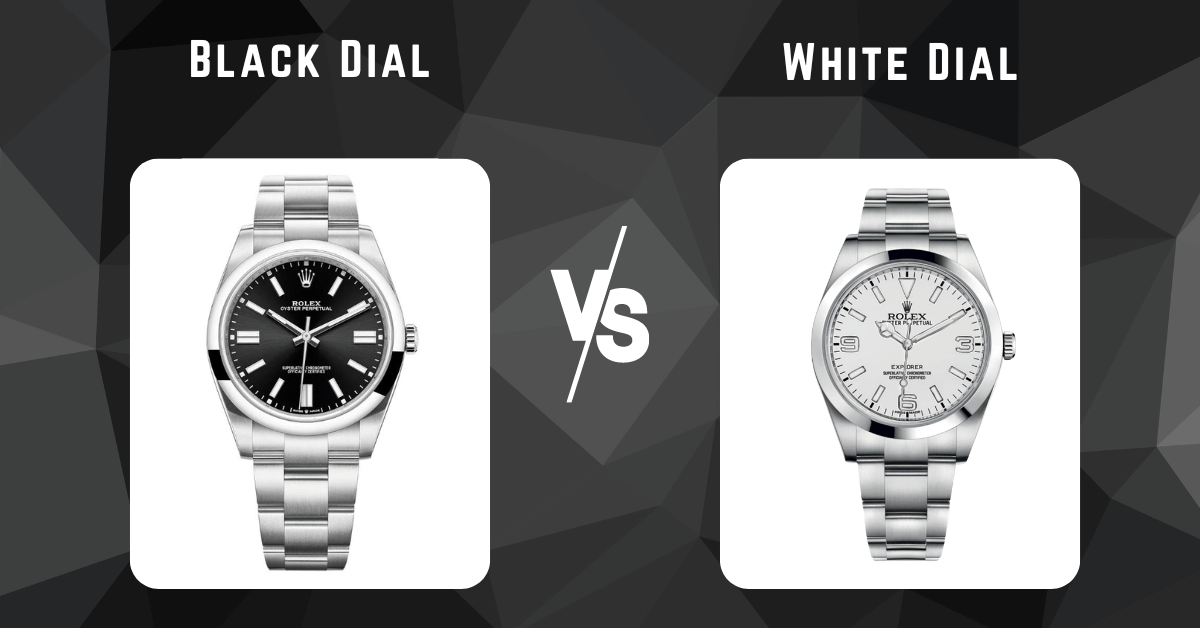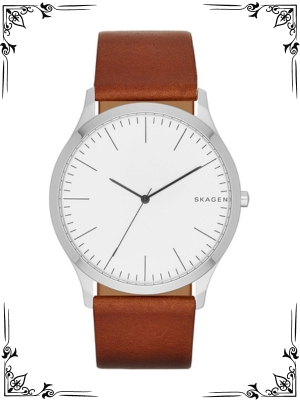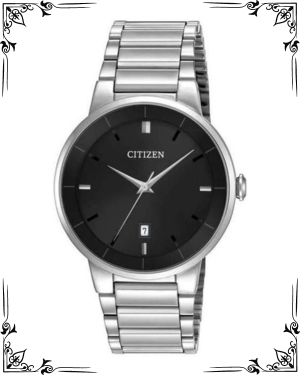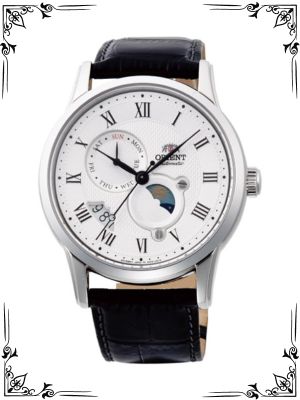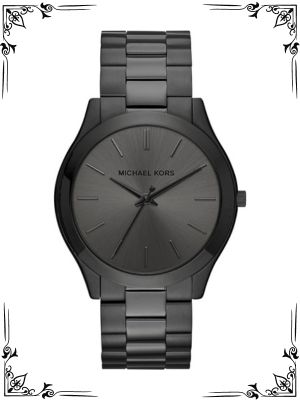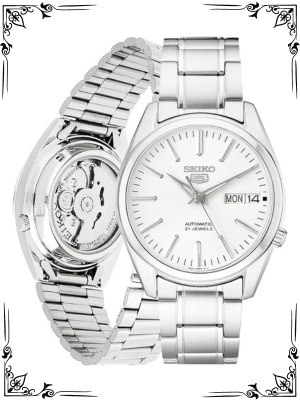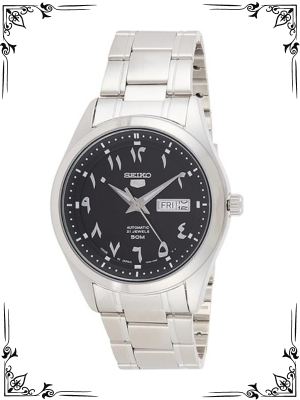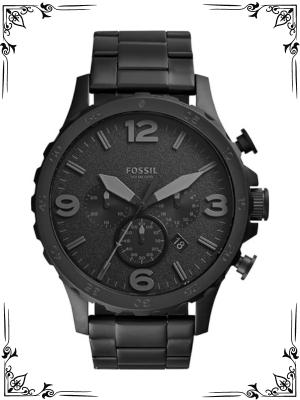Choosing a watch can be a daunting task. Beyond the technical specifications and functionalities, aesthetics play a major role. The dial color, in particular, significantly impacts the watch’s overall look and feel.
Two timeless options stand out: black and white dials. Both offer distinct advantages and disadvantages, catering to different styles and preferences. This guide delves into the world of black-dial vs. white-dial watches, equipping you to make an informed decision.
Legibility
Legibility is paramount in a watch. Black dials generally excel in this aspect. The high contrast between black and luminous hands (typically white or green) ensures easy time-telling in most lighting conditions. Even with subtle markers, black dials offer a clear and crisp reading. This makes them ideal for everyday wear, especially for activities requiring quick glances at the time.
White dials, on the other hand, can present legibility challenges. If the hands and markers are not sufficiently dark or have minimal lume application, readability might suffer in low-light situations. However, with bold hands and markers in contrasting colors like black or blue, white dials can achieve excellent legibility.
Ultimately, the legibility of a white dial watch depends on the specific design choices of the watchmaker.
Table: Legibility Comparison
| Feature | Black Dial | White Dial |
|---|---|---|
| Contrast with hands | High | Variable (depends on hand/marker color) |
| Performance in low light | Excellent | Can be challenging (depends on hand/marker lume) |
| Overall legibility | Generally superior | Good to excellent (depends on design) |
Style and Versatility
Black dials often exude a sense of sophistication and seriousness. Their neutral tone pairs well with various attire, making them versatile choices for both formal and casual occasions. Black dials can lend a sporty look to chronographs and divers’ watches while remaining elegant in dress watches with classic complications.
White dials, conversely, project a clean and crisp aesthetic. They can appear more formal or dressy compared to black dials. However, white dials can also be surprisingly versatile. With the right watch design and strap combination, they can transition seamlessly from formal settings to casual outings, adding a touch of brightness and sophistication.
Matching with Outfits:
- Black dials: Generally considered more versatile, complementing both formal and casual attire.
- White dials: Can be formal or casual depending on the watch design and strap material. Work particularly well with summery or nautical themes.
Strap Options:
Both black and white dials offer a wide range of strap options. Black dials pair well with leather, metal, or rubber straps, while white dials can create interesting contrasts with brown leather or colorful NATO straps.
Material and Durability
The material of the watch dial can influence its durability and overall look. Common materials for both black and white dials include:
- Lacquered Brass: A popular choice offering a classic, glossy finish.
- Matte Dials: Provide a more contemporary aesthetic and can reduce glare.
- Mother-of-Pearl: Adds a touch of luxury with its iridescent sheen, but can be more delicate.
- Carbon Fiber: Lightweight and sporty, often found in high-performance watches.
Black dials can potentially hide minor scratches or imperfections better than lighter-colored dials, especially if the dial has a matte finish. However, this doesn’t necessarily mean black dials are inherently more durable. The overall durability depends on the specific material used.
Readability in Sunlight
While black dials excel in low-light conditions, they can sometimes suffer from glare in direct sunlight. The glossy finish of a black lacquer dial might create unwanted reflections, making it difficult to read the time. This is less of a concern with matte black dials.
White dials, on the other hand, generally offer better readability in direct sunlight. The lighter color reflects light efficiently, minimizing glare and ensuring clear visibility. This makes white dials a good choice for outdoor activities where strong sunlight is a factor.
Personality and Preference
Ultimately, the choice between a black or white dial watch boils down to personal preference. Consider your overall style and the image you want to project.
- Black dials: Often preferred by individuals who favor a classic, understated, or sporty look.
- White dials: Can appeal to those who appreciate a clean, crisp aesthetic and a touch of sophistication.
Matching Your Lifestyle:
- Active lifestyle: Black dials might be more practical due to potentially better scratch resistance and glare reduction.
- Formal occasions: Both black and white dials can be formal depending on the watch design.
- Summary or nautical themes: White dials often complement these aesthetics well.
Brand Signature Styles
Certain watch brands are known for their signature dial colors. For instance, Rolex’s Submariner is iconic with its black dial, while Rolex’s Datejust is often offered with a variety of dial colors, including white.
Similarly, Omega’s Speedmaster Professional is strongly associated with its black tachymeter dial, while their Seamaster Aqua Terra comes in a range of dial colors, including white. Recognizing these brand signatures can help you identify watches with a specific heritage or aesthetic.
Price Considerations
Black and white dials generally don’t have a significant price difference on their own. The overall price of a watch is influenced by factors like the brand, movement type (quartz vs. automatic), materials used for the case and bracelet, and any additional complications.
However, some materials used for white dials, like mother-of-pearl, can be more expensive than commonly used materials for black dials.
Maintenance and Upkeep
Both black and white dials require similar levels of maintenance. Keeping the watch clean and avoiding harsh chemicals is essential. However, white dials might show dirt or dust more readily compared to black dials. This might necessitate slightly more frequent cleaning to maintain a pristine appearance.
Popular Series and Models
Black Dial Watches
Rolex Submariner Date 116610LN: A legendary dive watch with a black dial, known for its robustness, ceramic bezel, and luminous markers. It is water-resistant up to 300 meters.
Omega Speedmaster Professional Moonwatch: This iconic chronograph features a black dial and has been part of all six moon landings. It is celebrated for its precision, durability, and historical significance.
TAG Heuer Carrera Calibre 16 Chronograph: Known for its sporty design, this watch has a black dial with contrasting white subdials and indices, making it highly legible and stylish.
Seiko Prospex SRPC91: A popular diver’s watch with a black dial, featuring Seiko’s proprietary Lumibrite on the hands and markers, ensuring visibility in low-light conditions.
Hamilton Khaki Field Mechanical H69439931: This military-inspired watch has a black dial and is known for its durability, vintage design, and manual-winding movement.
White Dial Watches
Rolex Datejust 116200: A classic dress watch with a white dial, known for its timeless elegance, fluted bezel, and date function. It’s available in multiple sizes and configurations.
IWC Portugieser Chronograph IW371445: This elegant chronograph features a clean white dial with Arabic numerals and is praised for its refined design and precision.
Omega Seamaster Aqua Terra 150M: A versatile watch with a white dial, known for its teak-patterned design, water resistance, and Omega’s Co-Axial Master Chronometer movement.
Tissot Le Locle Powermatic 80: A dress watch with a white dial that exudes classic charm. It features Roman numerals, a guilloché dial, and an 80-hour power reserve.
Patek Philippe Calatrava 5196G: An epitome of elegance, this watch has a white dial with a minimalistic design, a small seconds subdial, and a manual-winding movement.
Both black and white dial watches have their own unique appeal and suit different styles and occasions. Black dial watches often give a modern, bold look suitable for sporty or formal occasions, while white dial watches offer a classic, clean appearance perfect for dressier events. The choice ultimately depends on personal preference and intended use.
Conclusion: Choosing the Right Watch Dial
There’s no single “right” answer when it comes to black vs. white dials. Both offer distinct advantages and disadvantages, catering to personal preferences and specific needs. Here’s a quick summary to guide your decision:
Choose a black dial if:
- Legibility in low-light conditions is a priority.
- You prefer a classic, versatile, or sporty look.
- You’re concerned about minor scratches or want to minimize glare.
Choose a white dial if:
- Readability in direct sunlight is important.
- You appreciate a clean and sophisticated aesthetic.
- You want a watch that complements summery or nautical themes.
Ultimately, the best way to choose is to try on watches with both black and white dials. See which one resonates more with your style and feels most comfortable on your wrist. Remember, the most important factor is that you love the watch you choose!
FAQs
What are the aesthetic differences between black-dial and white-dial watches?
Black dial watches tend to convey a more modern, sleek, and sometimes more formal look. They often appear more sophisticated and can give off a mysterious or bold vibe. White dial watches, on the other hand, usually offer a classic, clean, and versatile appearance.
They can be seen as more traditional and are often associated with a crisp, elegant style that is easily readable.
Which dial color is easier to read, black or white?
Readability often depends on the contrast between the dial and the hands/numerals. White dial watches generally offer higher readability in daylight because of the high contrast between the dark hands/numerals and the white background.
However, black dial watches can be easier to read in low-light conditions if they have luminous hands and markers, as the dark background makes the luminescent features stand out more.
Are there any differences in versatility between black-dial and white-dial watches?
White dial watches are typically more versatile and can be worn in both casual and formal settings. They pair well with a wide range of outfits and accessories.
Black dial watches can also be versatile, especially for formal or business attire, but might not be as adaptable for casual or light-colored outfits compared to white dials. Both can be dressed up or down, but white dials might edge out slightly in versatility.
How does the dial color impact the perception of the watch’s size?
Black dial watches often appear smaller than their actual size due to the dark color, which can make them a good choice for those with smaller wrists who prefer a more subtle look.
Conversely, white dial watches can appear larger because the bright color makes the dial stand out more, potentially making them a better option for those who want their watch to have a more prominent presence on their wrist.
Which dial color is more popular for specific types of watches, such as dress watches or sports watches?
Black dial watches are very popular for sports watches and diver’s watches because they often include features like luminescent hands and markers that stand out against the dark background, enhancing readability under various conditions.
White dial watches are often favored for dress watches due to their classic, clean look that complements formal wear. However, both colors are used across various watch types, and personal preference plays a significant role in the choice.

